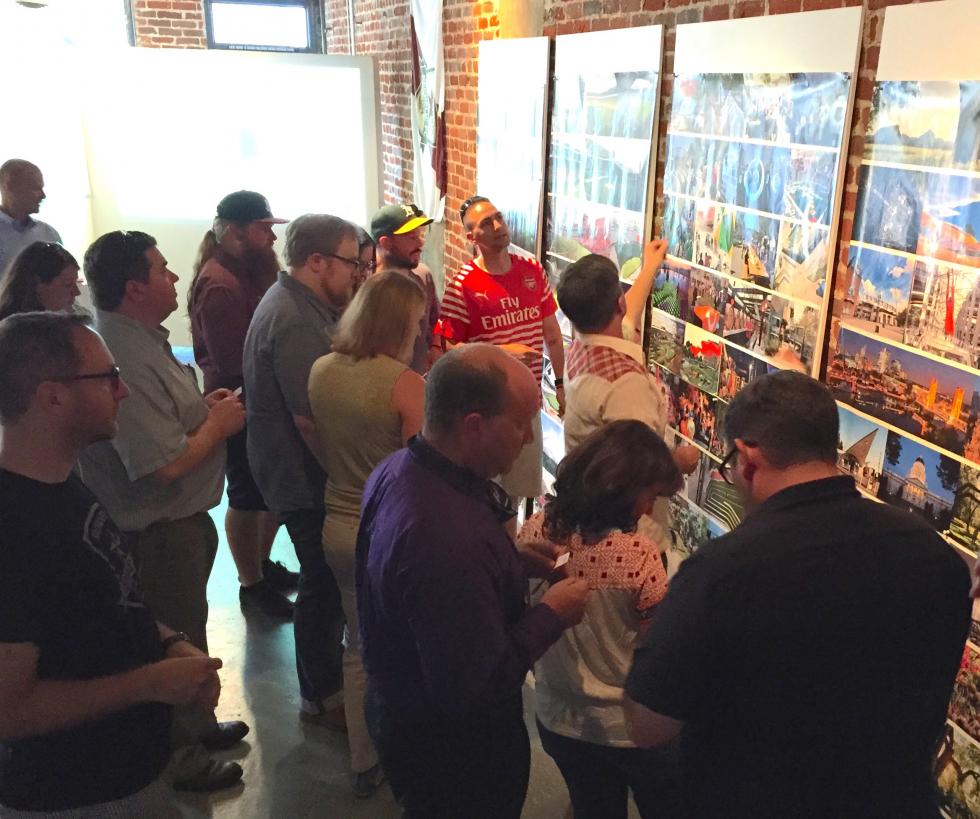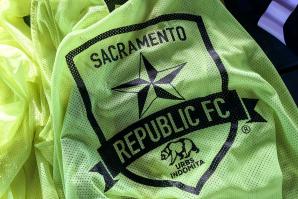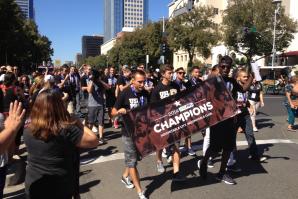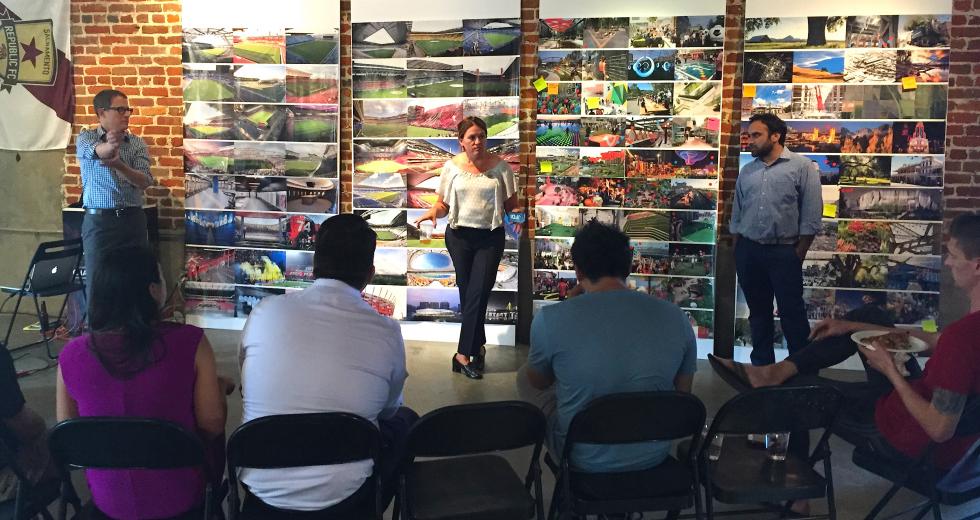The young and successful Sacramento Republic FC aims to sink its roots as deep as the coveted grounds just east of the Sacramento River will allow, with a new stadium at the Railyards. The plan is that within a few years, the venue will open as a downtown centerpiece, and Major League Soccer will officially welcome the local franchise into the fold as an expansion team.
The Republic is relying on the involvement of fans to make sure this vision happens. The franchise is already on its way to building the new stadium at the prime turf wedged between downtown, Old Sacramento and the rippling tides of the Sacramento River a reality. While on the pitch at Cal Expo’s Bonney Field before a recent match, Republic VP of Marketing and Communications Erika Bjork confidently confirms, “We’re past the conceptual drawings.”
The new stadium’s plans and designs have been a coordinated effort emphasizing specific wishes of fans. Beginning last July and concluding earlier this year, about 2,000 fans participated in an online survey that allowed them to state their preference on various elements, including type of grass, general design of the structure, and pregame and in-game amenities, such as the official chant of the squad and the specifics of an in-stadium beer garden. A series of focus groups reviewed several design-based images, coming up with a consensus and narrowing down a vision.
Related: Republic Fans Ready for Battle
Additionally, members of the Tower Bridge Battalion — the independent fan club of the Republic — were tapped for their ideas, including on a pre-game walk from a yet-to-be-disclosed downtown venue. Bjork notes that devoted soccer fans have often been to many stadiums, and some have traveled the globe to see the sport they love. This can make them more informed, equipped and eager to see the things they enjoy the most implemented locally. In many cases, those polled and surveyed were passionate and insistent. “They want an intimidation factor, plain and simple,” says Bjork, adding, “Having natural grass was also very important.”
The intimidation factor will largely be generated by the design of the stadium: a fully-enclosed structure to capture and keep the noise generated by fans, as opposed to literally letting it escape into thin air, as is the case in many large outdoor venues in California. “The design will direct the chanting and cheering straight onto the pitch,” Bjork says. “This is clearly what the people want.”
Republic FC held focus groups to get input from fans on the
design, and other elements, of the new soccer stadium. (Photo
courtesy Sacramento Republic FC)

Most major sports complexes are built almost entirely at the discretion of team ownership (nearby examples include Levi’s Stadium in Santa Clara). The “wait until you see this” approach has been sold to fans throughout North America, sometimes to mixed results (See: traffic logjams and uninspired food at Levi’s Stadium).
As a result of the Republic’s unique reliance on fan input to make many major decisions, eyes throughout professional soccer are watching closely to see how this plays out. If, 10 years from now, the Republic’s Railyards venue is by all accounts a success, the public input approach may become the norm. But not everyone in the building business is sold on these concepts.
“Focus groups aim to find the majority opinion of a populace, which doesn’t always mean the most appealing product. Many major advances in stadium design have come from a narrowed vision,” says Alex Bohl, a project manager at MST Architects in Sacramento. “When it comes to planning and design, too many cooks in the kitchen is often frowned upon.”
Bjork isn’t worried. “This is how we’ve done it from the start. A community-based approach is what this franchise is built on.”
John Parino, a Republic season ticket holder, expresses joy about the upcoming complex and possible transition into the MLS. He spoke at a recent downtown viewing party. “The idea of seeing the Republic in the MLS gets me so excited, and the public input approach was great. You don’t see that in sports at the pro level. This is the perfect market for soccer and we have a huge soccer-playing population.” Republic fan Isaac Escobedo has attended every home game. “We’ve got to know Bonney Field over the last few years. I expect the fun to be amplified at the Railyards.”
Editor’s Note: The original version of this story stated that the Golden 1 Center design was created solely at the discretion of team ownership. In crafting a design, ownership surveyed roughly 20,000 Sacramentans, had over 50 focus groups and multiple open houses.
Recommended For You

Schooled in Soccer
Sacramento Republic FC launches new development academy
Sacramento has always been a soccer town. From the tremendous growth of youth soccer to the days of professional indoor and semi-pro teams, the game has long had roots in the heart of the Capital Region. With 13 million Americans playing the game, soccer has exploded in the last decade and is the third most played team sport behind basketball and baseball. Sacramento Republic FC is capitalizing on that fútbol frenzy, now boasting an elite youth academy program.

Star Power to Ignite Sac Soccer
Owners hope new investment lineup will boost city's chances of going MLS
The Sacramento Republic FC has bolstered its quest to become a Major League Soccer franchise. On Monday the team announced an impressive addition of more than a dozen new business leaders who will invest in the group, including Ultimate Fighting Championship fighter and local business owner Urijah Faber.



